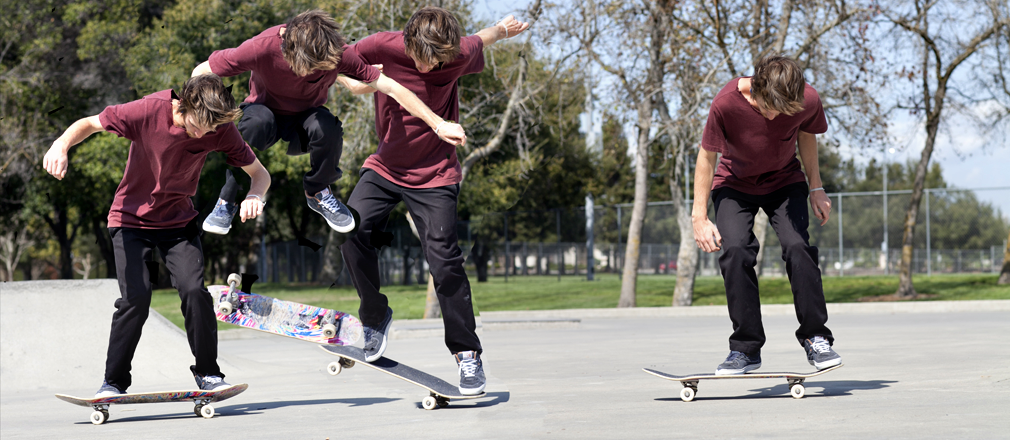Frontside Forces and Fakie Flight:
The Physics of Skateboarding Tricks
In the beginning, skateboarding was simple...
With nothing more than a two-by-four on roller-skate wheels, the sidewalk surfers of the 30s, 40s, and 50s had a straightforward mission: Start at the top of a hill and ride down. The primary goal was just to stay on and avoid collisions; given the humble equipment and rough road conditions, it was no small challenge. Now, thanks in part to improvements in design and materials , skateboarders have a higher calling.
In a blur of flying acrobatics, skaters leap and skid over and onto obstacles, executing flips and turns of ever increasing complexity--all at top speeds. For onlookers and beginners, it can be hard to follow the action, let alone answer the question that springs naturally to mind: How on earth do they do that? While it may seem that modern skateboarders are defying the laws of physics, the truth is that they're just using them to their advantage. Let's take a closer look at some fundamental skateboarding moves and the physics principles behind them.

